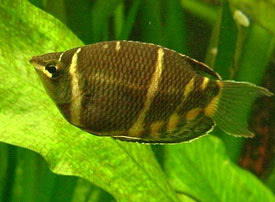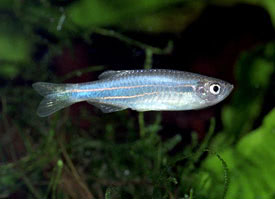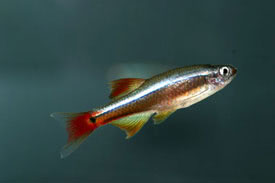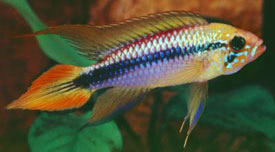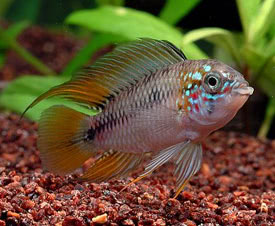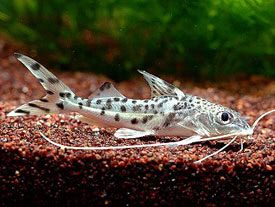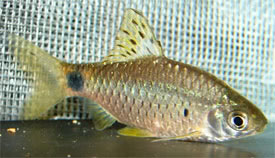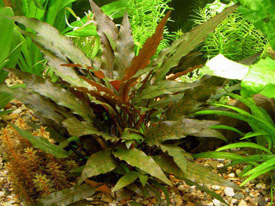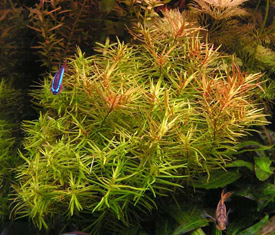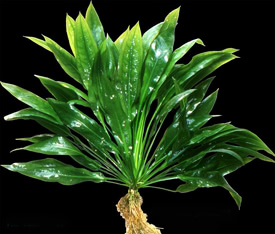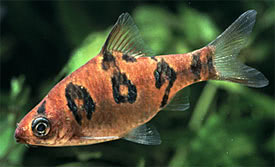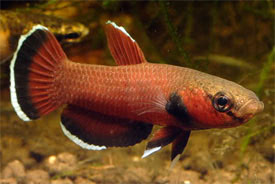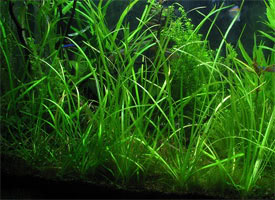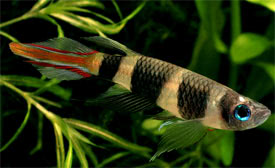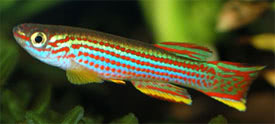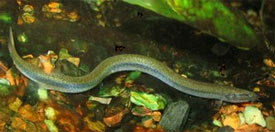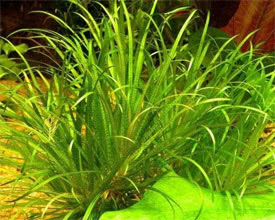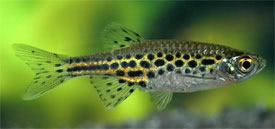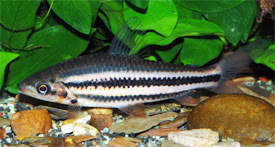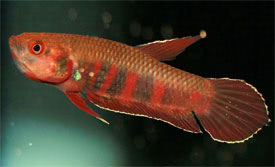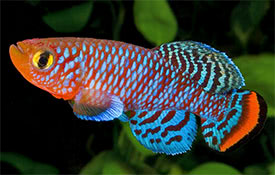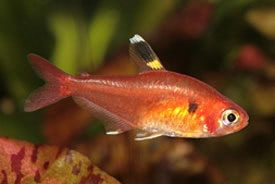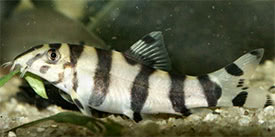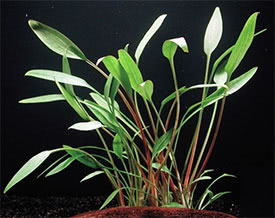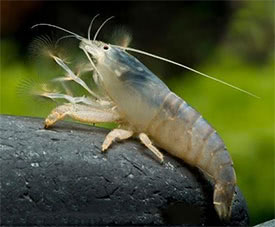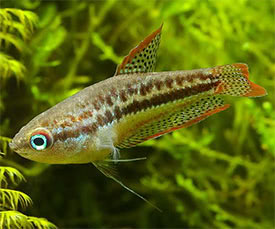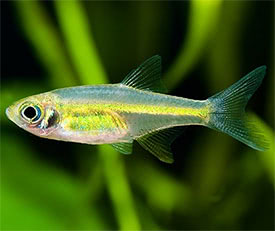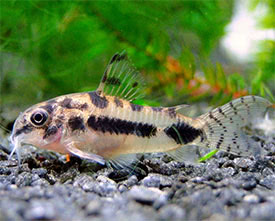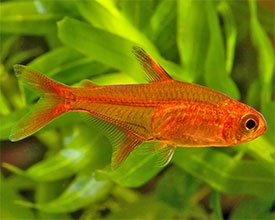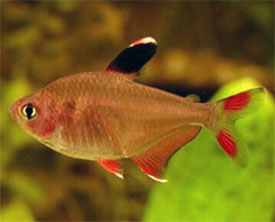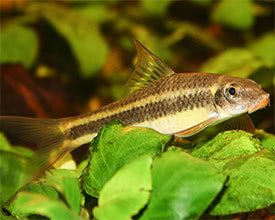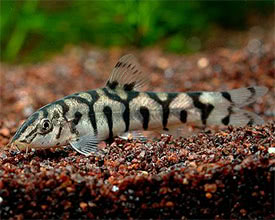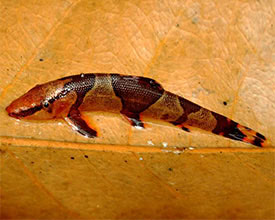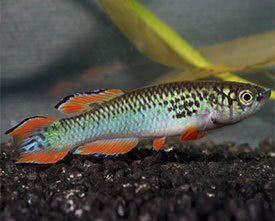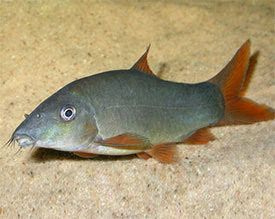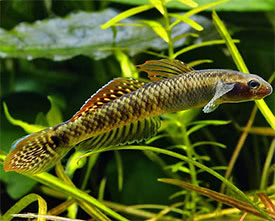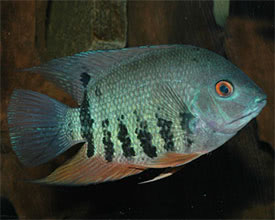
 Magyarul / Hungarian
Magyarul / Hungarian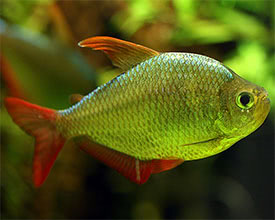
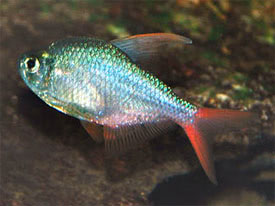
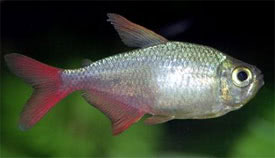

- Scientific name: Hyphessobrycon columbianus
- Synonyms: -
- Common name: Colombian Tetra
- Group: Characins
- Habitat: South America, Colombia
- Size: 5-6.5 cm
- Biotope: Found only in the the Río Acandi, usually in the slow-flowing parts of the river.
- Social behavior: A peaceful, schooling fish, that can be kept in a community aquarium with similar sized characins.
- Diet: Omnivorous; in the nature they feed on worms, insects and small amounts of plant material, while in the aquarium they will readily accept all kinds of live and frozen foods or good quality dried foods.
- Breeding: Quite easy.
- Tank: Minimum 80 litres
- Population: 8-10 fish for 120 litres
- Decoration: They prefer a densely planted tank with roots or driftwoods, and plenty of swimming space. Their tank should be covered, as they are excellent jumpers.
- Temperature: 20-28 °C
- pH: 5-7.5
- Hardness: 1-12 NK°
- Lifespan: 3-5 years
Description: Colombian Tetra has a silver-grey colored, high-backed body, which has a turquoise blue tinge of increasing intensity from the lateral line upwards. The fins are generally red, but the color may fade as the fish rests, or stressed. Hyphessobrycon columbianus has surprisingly large teeth and powerful jaws for such a small fish. They should be kept in a group of at least 6-8 species, as they become bolder in a larger group. Colombian tetra is generally a hardy, adaptable fish, a good choice for beginners. They are active, swift-moving characins which swimming in the mid- to upper water regions, so they should not be mixed with slow-moving, elaborately finned fish, as these may become easily stressed.
Mature males are more intensely-colored, slimmer-bodied, a little smaller and develop a more-extended dorsal-fin than females. They are egg-scattering free spawners and exhibiting no parental care. The healthy fish can be easily bred, even in the community tank a small number of fry can survive, but if you want to maximise yield a separate tank should be used with a base covered with fine leaved aquarium plants or laying grid. For breeding use soft (8 NK°), peat filtered, slightly acidic water. They can be bred in pairs or in small groups. When you breed them in pairs, always keep and condition males and females in separate containers, and choose the brightest colored male and the most plump female. Place the pair into the breeding tank in the evening, and the fish will usually spawn in the next morning, and spawning normally occurs for 2-4 hours. The female will usually lay 100-400 eggs, but a well-conditioned mature female may lay as many as 2000 eggs. The eggs hatch in 24-36 hours and the larvae become free-swimming after another 3 or 4 days. The fry get the adult coloration at approximately 2 cm of length.








